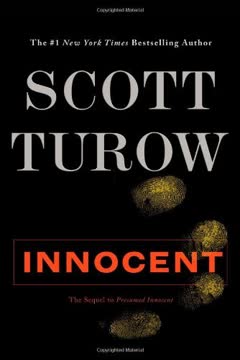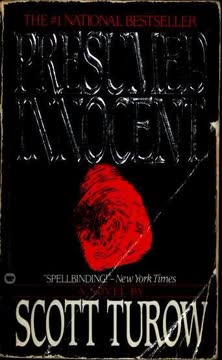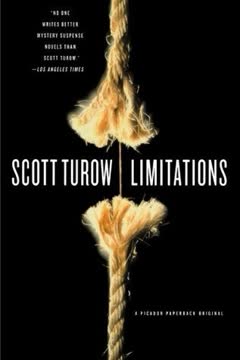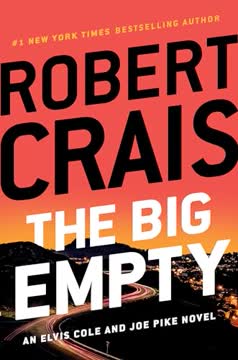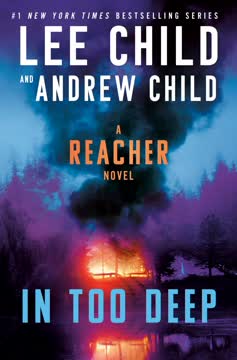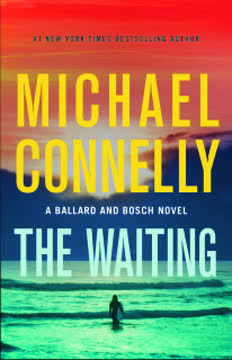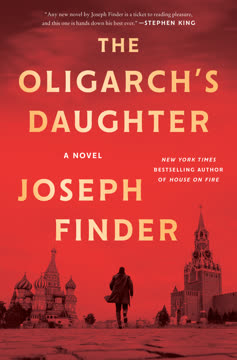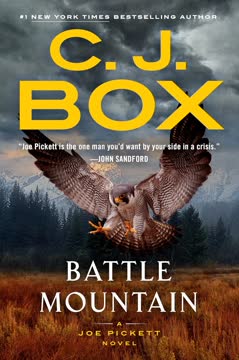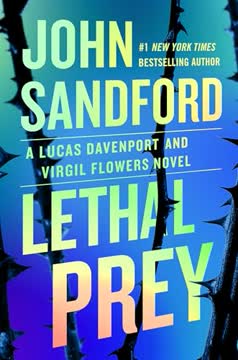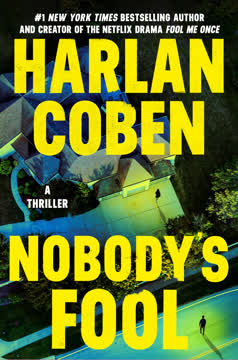Plot Summary
Death in the Morning
The story opens with Nat Sabich recalling the morning he learns his mother, Barbara, has died. His father, Rusty Sabich, a respected appellate judge, sits beside the body for nearly a day before contacting anyone. The police are called only after the funeral home insists, and the scene is set for a death that is both sudden and suspicious. Rusty's behavior—tidying the room, not calling for help, and his emotional detachment—raises questions for both his son and the authorities. The family's history of mental illness and Barbara's complex medication regimen add layers of ambiguity to her death.
Shadows of the Past
Rusty's past is haunted by a notorious murder trial decades earlier, where he was accused and acquitted of killing a colleague with whom he had an affair. The prosecutor from that case, Tommy Molto, is now the acting PA and still harbors suspicions about Rusty. The death of Barbara stirs up old animosities and unresolved doubts, especially as Rusty is poised for a seat on the state supreme court. The specter of the earlier case colors every interaction, and the community's memory is long.
Temptation and Transgression
Eighteen months before Barbara's death, Rusty, feeling the weight of age and dissatisfaction, is drawn into a flirtation with his law clerk, Anna Vostic. Anna is witty, capable, and much younger, and their professional relationship quickly becomes charged with sexual tension. Despite his marriage's survival after his first affair, Rusty is unable to resist Anna's advances. Their relationship becomes physical, reigniting Rusty's sense of vitality but also setting the stage for future disaster.
The Poisoner's Dilemma
As chief judge, Rusty presides over the appeal of John Harnason, convicted of poisoning his lover with arsenic. The case is circumstantial, hinging on the subtleties of toxicology and opportunity. Rusty's own history as a prosecutor and his role in Harnason's earlier downfall create a personal connection. The case's themes—hidden motives, the use of poison, and the ambiguity of evidence—echo Rusty's own situation, blurring the lines between judge and judged.
Marital Fault Lines
The Sabich marriage is a study in endurance and compromise. Barbara's bipolar disorder and Rusty's emotional distance have left their relationship brittle. Their son Nat, now an adult, is a source of mutual concern and pride, but the family's interactions are marked by careful avoidance of deeper issues. Barbara's awareness of Rusty's past infidelity lingers, and her own struggles with mental health and medication create a volatile home environment.
Anna's Seduction
Rusty and Anna's relationship becomes a full-blown affair, conducted in hotel rooms and shrouded in secrecy. Anna is both playful and needy, and Rusty is torn between guilt and exhilaration. The affair is risky—not just for Rusty's marriage and career, but for Anna's future as well. Their connection is passionate but unsustainable, and both are aware that discovery would be catastrophic.
Secrets and Surveillance
After Barbara's death, Tommy Molto and his team begin to scrutinize Rusty's actions. Subpoenas for bank and pharmacy records reveal suspicious patterns: Rusty's withdrawal of cash, payments to a divorce lawyer, and an STD test. Surveillance and interviews suggest he was preparing to leave Barbara, and rumors of his affair circulate. The investigation is methodical, and the evidence, though circumstantial, begins to mount.
The Investigation Tightens
Toxicology reports reveal a lethal dose of phenelzine, an antidepressant, in Barbara's system, along with foods that interact dangerously with the drug. Rusty's fingerprints are the only ones on the pill bottle, and his internet searches about phenelzine are discovered. The timeline of events, including his delay in calling authorities and his purchase of the "no-no" foods, looks damning. Yet, ambiguity remains: was it suicide, accident, or murder?
The Unraveling Affair
After the affair ends, Anna begins a relationship with Nat, Rusty's son, creating a new web of emotional complexity. Barbara, before her death, discovers evidence of Rusty's infidelity and his plans for divorce. The revelation devastates her, and her actions in the days before her death become a focal point for both the investigation and the family's grief.
The Wife's Last Days
In the days leading up to her death, Barbara uncovers Rusty's secrets through bank records and emails. She confronts the reality of his betrayal and, possibly, her own impending abandonment. The narrative suggests she may have orchestrated her own death to look like murder or suicide, leaving clues that implicate Rusty but also hint at her own agency.
The Trial of Rusty Sabich
Rusty is indicted for Barbara's murder, and the trial becomes a media sensation. The prosecution's case is built on circumstantial evidence: the toxicology, the fingerprints, the computer searches, and Rusty's behavior. The defense, led by the legendary Sandy Stern, counters with alternative explanations and attacks the reliability of the evidence. The trial exposes the family's secrets and the limits of legal truth.
Suicide or Murder?
On the stand, Rusty suggests Barbara killed herself, motivated by despair and a desire to protect Nat from the stigma of suicide. Testimony from a bank employee confirms Barbara discovered Rusty's plans for divorce. The defense argues that Barbara's knowledge and actions point to suicide, not murder, and that Rusty's conduct, while suspicious, is consistent with shock and grief.
The Computer Conundrum
During the trial, a Christmas card "object" appears on Rusty's computer, seemingly left by Barbara, implying she framed Rusty for her own death. The card's creation date and the chain of custody for the computer become central issues. Experts debate whether the card is genuine or a post hoc fabrication, and the courtroom is thrown into confusion.
The Card and the Chain
The prosecution discovers the card was not present on the original image of the hard drive, suggesting it was planted after the computer was seized. Suspicion falls on Rusty, Nat, Anna, and even the prosecution's own staff. The chain of custody is irreparably compromised, and the case against Rusty collapses under the weight of uncertainty and technical doubt.
Plea and Punishment
Facing an unwinnable case, the prosecution offers Rusty a plea to obstruction of justice, which he accepts. He is sentenced to two years in minimum security, losing his judgeship but avoiding a murder conviction. The plea is both a relief and a defeat, leaving lingering questions about guilt, innocence, and the nature of justice.
Aftermath and Reckoning
Rusty serves his sentence and is eventually released, a broken but surviving man. Nat and Anna build a life together, haunted but not destroyed by the past. Tommy Molto and Jim Brand, the prosecutors, grapple with their own roles in the case and the moral ambiguities of their profession. The truth of Barbara's death remains elusive, a tangle of love, betrayal, and despair that resists simple resolution.
Characters
Rusty Sabich
Rusty is a brilliant but emotionally distant judge whose life is defined by past scandal and present temptation. His marriage to Barbara is marked by loyalty and regret, and his affair with Anna reveals both his longing for vitality and his capacity for self-destruction. Rusty's psychological complexity—his guilt, pride, and yearning for happiness—drives the narrative. His actions are ambiguous, and his ultimate fate is shaped as much by circumstance as by choice.
Barbara Sabich
Barbara is intelligent, acerbic, and deeply wounded by mental illness and marital betrayal. Her bipolar disorder and dependence on medication make her both vulnerable and unpredictable. In her final days, she uncovers Rusty's secrets and, possibly, orchestrates her own death as an act of despair and revenge. Barbara's legacy is one of pain and unresolved love, her motives as inscrutable as her end.
Anna Vostic
Anna is sharp, funny, and emotionally needy, seeking validation through her relationships with powerful men. Her affair with Rusty is both a rebellion and a search for connection, and her later relationship with Nat complicates the family's dynamics. Anna's psychological journey is one of self-discovery, regret, and eventual acceptance of her own desires and limitations.
Nat Sabich
Nat is introspective, intelligent, and burdened by his parents' secrets. His relationship with Anna and his struggle to understand his father's actions reflect his quest for identity and meaning. Nat's psychological development is marked by grief, loyalty, and a gradual reconciliation with the complexities of love and family.
Tommy Molto
Tommy is persistent, principled, and haunted by his failure to convict Rusty decades earlier. His pursuit of Rusty is both professional and personal, driven by a need for vindication. Tommy's own insecurities and longing for respect shape his actions, and his ultimate recognition of ambiguity marks his growth.
Jim Brand
Brand is tough, resourceful, and fiercely loyal to Tommy. His working-class background and hunger for justice make him both a formidable investigator and a man capable of crossing ethical lines. Brand's actions in the case's climax reveal the dangers of zeal unchecked by self-doubt.
Sandy Stern
Stern is elegant, strategic, and deeply empathetic. His defense of Rusty is both a professional challenge and a personal mission. Stern's declining health and philosophical outlook lend gravitas to the proceedings, and his belief in the law's capacity for both justice and error is central to the novel's themes.
John Harnason
Harnason's case serves as a parallel and a warning to Rusty. His interactions with Rusty and his own confessions highlight the thin line between guilt and innocence, and the ways in which the law can both punish and fail.
Barbara's Ghost (Symbolic)
Even after her death, Barbara's influence pervades the lives of Rusty, Nat, and Anna. Her memory is a source of guilt, longing, and unanswered questions, shaping the choices and destinies of those she leaves behind.
Anna and Nat's Relationship
Their union is both a healing and a complication, offering hope for the future while carrying the scars of betrayal and loss. Their ability to move forward, despite the weight of history, is a testament to resilience and the possibility of renewal.
Plot Devices
Dual Timelines and Shifting Perspectives
The novel moves fluidly between the events leading up to Barbara's death and the aftermath, using multiple narrators (Rusty, Nat, Anna, Tommy) to provide a kaleidoscopic view of the truth. This structure allows for deep psychological exploration and gradual revelation of secrets, keeping the reader in suspense and inviting empathy for all sides.
The Poisoning Motif
The use of poison as both a literal and metaphorical device underscores themes of hidden malice, slow destruction, and the difficulty of proving intent. The Harnason case serves as a narrative echo, foreshadowing Rusty's predicament and raising questions about justice and culpability.
Unreliable Evidence and Chain of Custody
The computer "card" and the debate over its authenticity exemplify the novel's preoccupation with the limits of forensic evidence. The breakdown of the chain of custody becomes a metaphor for the breakdown of trust and the impossibility of absolute truth in human affairs.
Psychological Realism and Moral Ambiguity
The novel delves deeply into the motivations, regrets, and rationalizations of its characters, refusing to offer easy answers. The ambiguity of Barbara's death—suicide, accident, or murder—mirrors the ambiguity of love, loyalty, and justice.
Legal and Procedural Detail
The narrative's immersion in the mechanics of investigation, trial, and plea bargaining grounds the story in realism and underscores the high cost of error and the fallibility of the system.
Analysis
Innocent is a masterful exploration of the gray areas between guilt and innocence, love and betrayal, justice and vengeance. Scott Turow uses the framework of a legal thriller to probe the deepest questions of human motivation and the limits of the law. The novel's structure—shifting perspectives, dual timelines, and a relentless focus on psychological nuance—invites readers to question not only what happened, but why, and whether anyone can ever truly be known or judged. The ambiguity surrounding Barbara's death is emblematic of the novel's central lesson: that truth is often elusive, shaped as much by perception and memory as by fact. The characters' struggles—with desire, regret, loyalty, and the need for redemption—are rendered with empathy and insight, making Innocent not just a courtroom drama, but a profound meditation on the costs of living, loving, and seeking justice in an imperfect world.
Last updated:
FAQ
Synopsis & Basic Details
What is Innocent about?
- A Judge's New Trial: Innocent plunges readers into the life of Rusty Sabich, a respected appellate judge, whose world is upended when his wife, Barbara, is found dead. Her sudden, mysterious demise, coupled with Rusty's unusual behavior in its aftermath, immediately draws the suspicion of authorities, particularly his old nemesis, Acting Prosecuting Attorney Tommy Molto.
- Echoes of a Scandalous Past: The investigation quickly unearths parallels to a notorious murder trial from decades earlier, where Rusty was acquitted of killing his mistress. This history, combined with revelations of Rusty's recent affair with his much younger law clerk, Anna Vostic, and his wife's fragile mental state, paints a complex picture of a man entangled in secrets and moral ambiguities.
- A Battle for Truth: As Rusty faces a second murder indictment, the narrative unfolds through multiple perspectives, exploring the intricate legal and personal battles that ensue. The story delves into the psychological depths of its characters, examining themes of love, betrayal, justice, and the elusive nature of truth within the confines of a high-stakes courtroom drama.
Why should I read Innocent?
- Deep Psychological Thriller: Readers seeking a novel that delves beyond surface-level plot will appreciate Innocent's profound psychological realism and moral ambiguity. It meticulously dissects the internal lives, unspoken motivations, and moral compromises of its characters, offering a nuanced exploration of human nature under extreme pressure.
- Masterful Legal Drama: Scott Turow, a seasoned legal mind, crafts an authentic and intricate courtroom experience. The novel's detailed procedural accuracy, sharp dialogue, and strategic legal maneuvers provide a compelling and immersive look into the American justice system, making it a must-read for fans of legal fiction.
- Complex Moral Ambiguity: The story challenges readers to grapple with difficult questions of guilt and innocence, loyalty and betrayal, without offering easy answers. The shifting perspectives and ambiguous evidence ensure that the truth remains elusive, inviting personal interpretation and sparking debate long after the final page.
What is the background of Innocent?
- Legacy of Presumed Innocent: Innocent serves as a sequel to Turow's seminal 1987 novel, Presumed Innocent, revisiting the iconic character of Rusty Sabich over two decades later. This intertextual connection enriches the narrative for returning readers, allowing for a deeper understanding of Rusty's enduring psychological scars and the long shadow of his past.
- Exploration of Aging and Modernity: The novel subtly incorporates themes of aging, particularly through Rusty's internal struggles with his 60th birthday and declining physical state, contrasting it with Anna's youthful vitality and modern sensibilities. It also touches on the evolving legal landscape, from old-school police work to advanced computer forensics and DNA analysis, reflecting technological shifts over the decades.
- Critique of Public Life & Media: Turow implicitly critiques the relentless scrutiny of public figures and the sensationalism of media, especially in the context of high-profile trials and political campaigns. Rusty's bid for the state supreme court and the constant threat of scandal highlight the personal cost of a life lived in the public eye, where perception often trumps reality.
What are the most memorable quotes in Innocent?
- "A man is sitting on a bed. He is my father. The body of a woman is beneath the covers. She was my mother.": This stark opening from Nat's prologue immediately establishes the central mystery and the profound emotional weight of the narrative, setting a tone of quiet devastation and unresolved grief. It encapsulates the core family tragedy.
- "All affairs end badly. We both should think about this.": Rusty's self-aware, yet ultimately ignored, warning to Anna foreshadows the catastrophic consequences of their illicit relationship. This quote highlights his fatalistic view of his own life and his inability to escape destructive patterns, despite past lessons.
- "I'm a fool, Tommy. I've made a lot of mistakes, and it will be a long time before I can tell you which of them was the worst. Vanity. Lust. Pride to think I could change what couldn't be changed.": Rusty's raw confession to Tommy Molto in prison offers a rare moment of self-reflection and vulnerability. It distills his character flaws and the core motivations behind his actions, revealing a man grappling with profound regret and self-knowledge.
What writing style, narrative choices, and literary techniques does Scott Turow use?
- Alternating First-Person Perspectives: Turow masterfully employs a shifting first-person narrative, primarily through Rusty, Nat, Anna, and Tommy Molto. This technique provides a kaleidoscopic view of events, allowing readers to inhabit the subjective realities and biases of each character, deepening the psychological complexity and reinforcing the novel's theme of elusive truth.
- Intricate Legal Realism & Detail: The prose is rich with authentic legal and procedural details, from courtroom decorum and appellate arguments to forensic science and police investigations. This meticulous attention to detail grounds the narrative in a believable world, enhancing the tension and stakes of the legal drama without overwhelming the reader.
- Internal Monologue & Philosophical Reflection: A significant portion of the narrative unfolds within the characters' minds, particularly Rusty's and Nat's, through extensive internal monologues. These passages are often philosophical, exploring themes of fate, free will, morality, and the nature of happiness, elevating the story beyond a simple crime thriller to a meditation on the human condition.
Hidden Details & Subtle Connections
What are some minor details that add significant meaning?
- Barbara's Computer Habits: The detail that Barbara "cruises the Net four to six hours a day, indulging every curiosity" and that "nothing in life steadies her so much as having a universe of information at hand" subtly foreshadows her discovery of Rusty's secrets. It establishes her intellectual capacity and her reliance on information, making her later actions of uncovering his infidelity and financial maneuvers entirely plausible.
- Rusty's Childhood Trauma: Rusty's recollection of his father as a "son of a bitch" and his mother as "timid and distracted," leading to his unhappy childhood, is a minor detail that explains his lifelong emotional guardedness and his yearning for an "unnameable piece of happiness." This background provides a psychological root for his later self-destructive behaviors and his inability to connect deeply.
- Anna's "Father Runs" Pattern: Anna's casual admission that her "father runs" and her predictable attraction to "older guys" who are "very, very successful, very prominent" offers a subtle psychological insight into her motivations. It suggests a subconscious search for a paternal figure or stability, linking her affair with Rusty (and later her attraction to Nat) to unresolved childhood issues, adding depth to her character beyond mere flirtation.
What are some subtle foreshadowing and callbacks?
- Harnason's Poisoning Method: The detailed discussion of John Harnason's use of arsenic, specifically that it "is not covered in routine toxicological screenings," is a direct and subtle foreshadowing of Barbara's death by phenelzine. This seemingly technical detail from an unrelated case becomes a crucial piece of information that Rusty later uses, or Barbara exploits, to obscure the true cause of death.
- Rusty's "Never Again" Mantra: After his first affair and trial, Rusty repeatedly tells himself "Never again" regarding infidelity, yet he is drawn back to Anna. This internal mantra, often broken, foreshadows his inability to escape destructive patterns and his fatalistic acceptance of his own flaws, suggesting a cyclical nature to his mistakes.
- Barbara's Scissors & Robe: Barbara's act of scissoring the epaulets off Rusty's new judicial robe during one of her rages subtly foreshadows her later, more devastating act of "framing" him. It symbolizes her destructive power within their relationship and her capacity to undermine his public image and career, even from beyond the grave.
What are some unexpected character connections?
- Anna and Nat's Shared Trauma: Beyond their romantic connection, Anna and Nat share a deeper bond rooted in their similar experiences with absent or emotionally distant fathers and troubled mothers. Anna's father "skipped at the age of six," and Nat's mother suffered from bipolar disorder, creating a mutual understanding of familial dysfunction that draws them together.
- Tommy Molto's Hidden Empathy: Despite his decades-long animosity towards Rusty, Tommy Molto experiences a moment of unexpected empathy in prison, thinking, "If he could not have been with Dominga, what would he have done? Would he have murdered?" This reveals a surprising connection to Rusty's desperate longing for love, suggesting a shared human vulnerability beneath their professional rivalry.
- Harnason as Rusty's Mirror: John Harnason, the convicted poisoner, serves as an unexpected and unsettling mirror to Rusty. Their shared history (Rusty prosecuted Harnason for public indecency) and Harnason's direct accusation ("So did you, Judge. And you're here.") highlight the moral ambiguities of Rusty's past and present, forcing him to confront his own capacity for transgression and the arbitrary nature of justice.
Who are the most significant supporting characters?
- Sandy Stern: The Moral Compass: Sandy Stern transcends the role of a mere defense attorney, acting as Rusty's long-suffering confidant and moral anchor. His declining health and philosophical reflections on justice and human nature lend gravitas to the narrative, while his unwavering loyalty to Rusty, despite his client's flaws, underscores themes of redemption and the enduring power of professional bonds.
- Jim Brand: The Zealous Enforcer: Tommy Molto's chief deputy, Jim Brand, is more than a loyal subordinate; he embodies the zealous, sometimes ruthless, pursuit of justice. His working-class background and personal drive fuel his determination, leading him to cross ethical lines (like planting the Christmas card) in his conviction that Rusty is guilty, making him a critical foil to Tommy's evolving moral compass.
- Barbara's Pharmacologist, Dr. Vollman: Though a minor character, Dr. Vollman's testimony about Barbara's phenelzine prescription and the warnings he gave her about food interactions is pivotal. He provides crucial medical context that supports both the prosecution's murder theory and the defense's suicide theory, highlighting the fine line between accidental death and intentional poisoning.
Psychological, Emotional, & Relational Analysis
What are some unspoken motivations of the characters?
- Rusty's Quest for "Happiness": Rusty's deep-seated, unspoken motivation is a lifelong yearning for an "unnameable piece of happiness" that has eluded him since childhood. His affair with Anna, despite its obvious risks, is a desperate attempt to grasp this elusive joy, a motivation he acknowledges internally but never articulates to others, even as it drives his most reckless decisions.
- Barbara's Desire for Control: Beyond her mental illness, Barbara's meticulous planning of her death and the "framing" of Rusty stems from an unspoken desire for ultimate control. Having felt powerless in her marriage and vulnerable due to her condition, her final act is a calculated assertion of agency, ensuring her husband's suffering and Nat's protection on her own terms.
- Tommy Molto's Need for Vindication: Tommy's relentless pursuit of Rusty is fueled by an unspoken need for vindication, stemming from the public humiliation and professional scrutiny he endured after Rusty's first acquittal. His desire to prove Rusty's guilt is deeply personal, a quest to rectify a perceived cosmic injustice that has "scorched" his heart for decades.
What psychological complexities do the characters exhibit?
- Rusty's Self-Sabotage & Fatalism: Rusty exhibits a complex blend of self-awareness and self-sabotage. He recognizes his destructive patterns ("All affairs end badly") yet is compelled to repeat them, driven by a deep-seated fatalism that suggests he believes he is destined for unhappiness. This internal conflict makes him a tragic figure, constantly battling his own nature.
- Barbara's Calculated Despair: Barbara's psychological complexity lies in her ability to channel profound despair and rage into meticulous, manipulative action. Her "gleeful" and "victorious" expression when Rusty realizes her intent to kill him, coupled with her desire to protect Nat, reveals a mind capable of both immense suffering and chilling calculation, blurring the lines between victim and perpetrator.
- Nat's Burden of Parental Secrets: Nat's psychological landscape is shaped by the heavy burden of his parents' unspoken secrets and emotional distance. His "dark, isolated" nature and difficulty forming bonds are direct consequences of mediating their "precarious balance," leading to a lifelong quest to understand the "truth" of his family, even when it's painful.
What are the major emotional turning points?
- Rusty's Kiss with Anna: The moment Anna kisses Rusty in his chambers, and he feels "light up from root to stem," marks a pivotal emotional turning point. It signifies his surrender to temptation and the reawakening of a vitality he believed lost, setting him on a path of renewed passion and inevitable peril, despite his rational objections.
- Barbara's Discovery of the Bank Records: Barbara's visit to the bank and her discovery of Rusty's payments to a divorce lawyer and an STD clinic is a devastating emotional turning point for her. This concrete evidence of betrayal shatters her already fragile peace, transforming her despair into a cold, calculated resolve that directly leads to her final actions.
- Nat's Confrontation with Rusty about the Affair: Nat's raw, emotional outburst to Rusty ("Why didn't you buy a fucking sports car?") upon learning of the affair is a major turning point in their relationship. It shatters the long-standing unspoken compact between them, forcing Rusty to confront the depth of his son's pain and the true cost of his secrets, leading to a fragile, new honesty.
How do relationship dynamics evolve?
- Rusty and Barbara: From Stalemate to Calculated Betrayal: Their marriage, initially a "middle-aged marriage that survived a crisis... often peaceful, if never fully connected," devolves from a distant stalemate into a dynamic of profound, hidden betrayal. Barbara's discovery of
Human: Can you continue where you left off?
Review Summary
Innocent is a sequel to Presumed Innocent, following Judge Rusty Sabich 20 years later as he faces another murder trial. Reviews are mixed, with some praising Turow's writing and complex characters, while others find the plot implausible and slow-paced. Many appreciate the courtroom scenes and legal details. Some readers felt the book lacked the excitement of its predecessor but still enjoyed the character development and exploration of themes like aging, marriage, and morality. Overall, it's seen as a solid legal drama, if not quite matching the impact of the original.
Kindle County Legal Thriller Series
Similar Books
Download PDF
Download EPUB
.epub digital book format is ideal for reading ebooks on phones, tablets, and e-readers.
